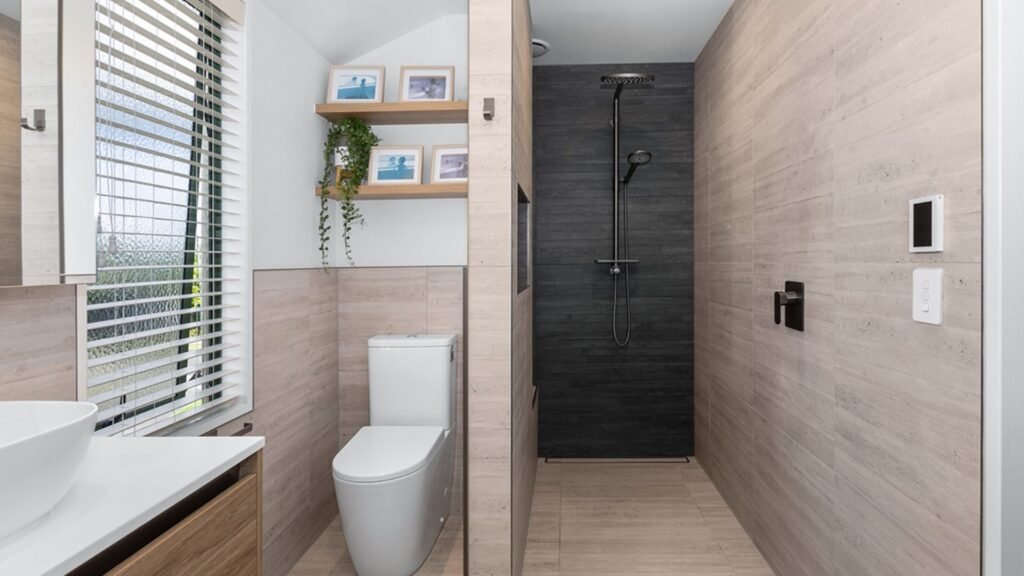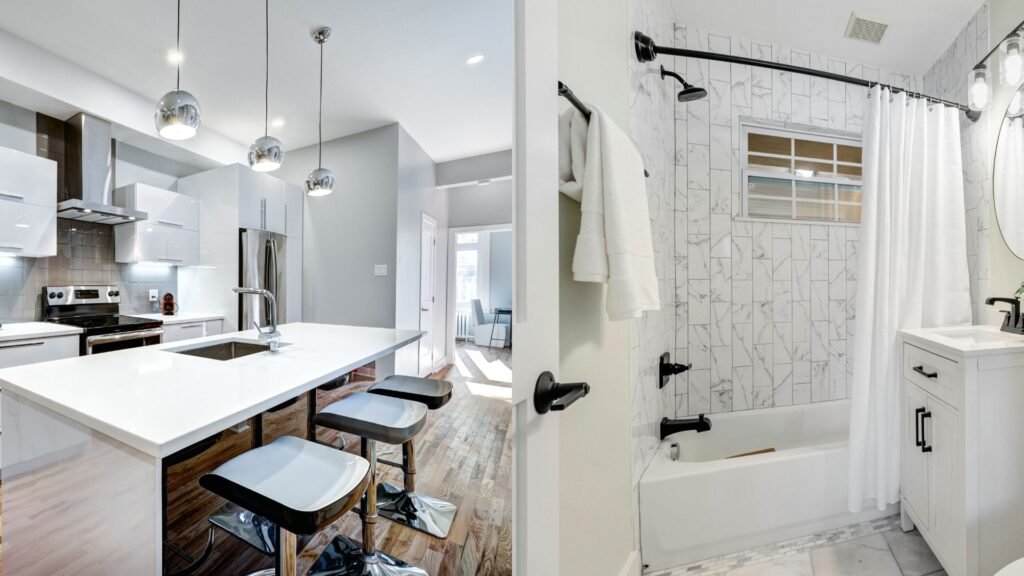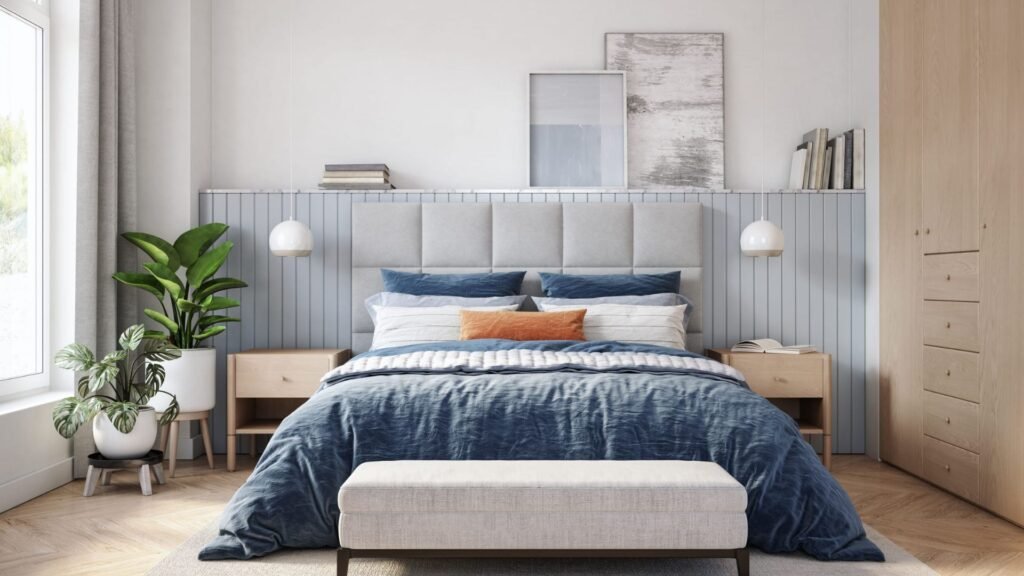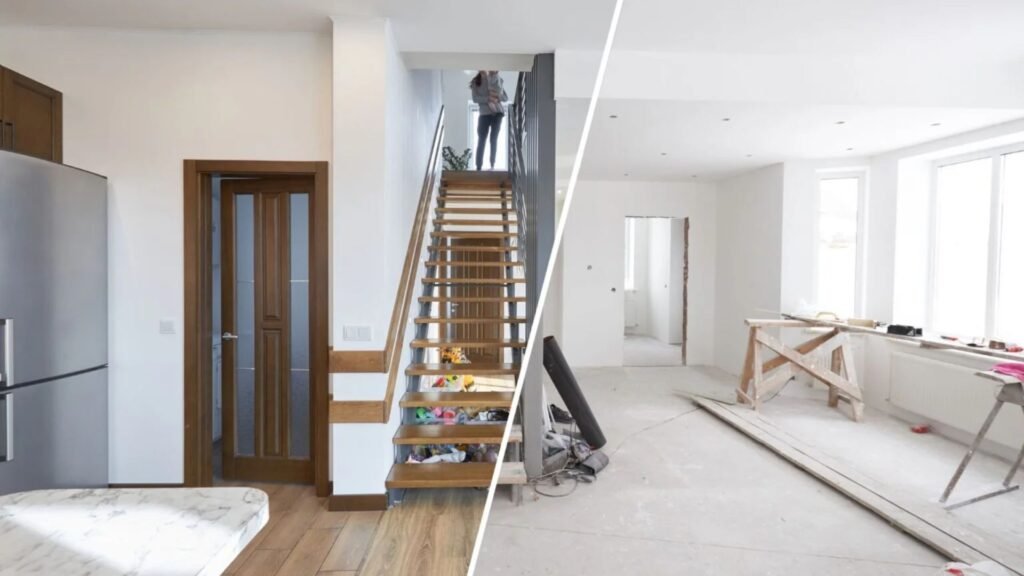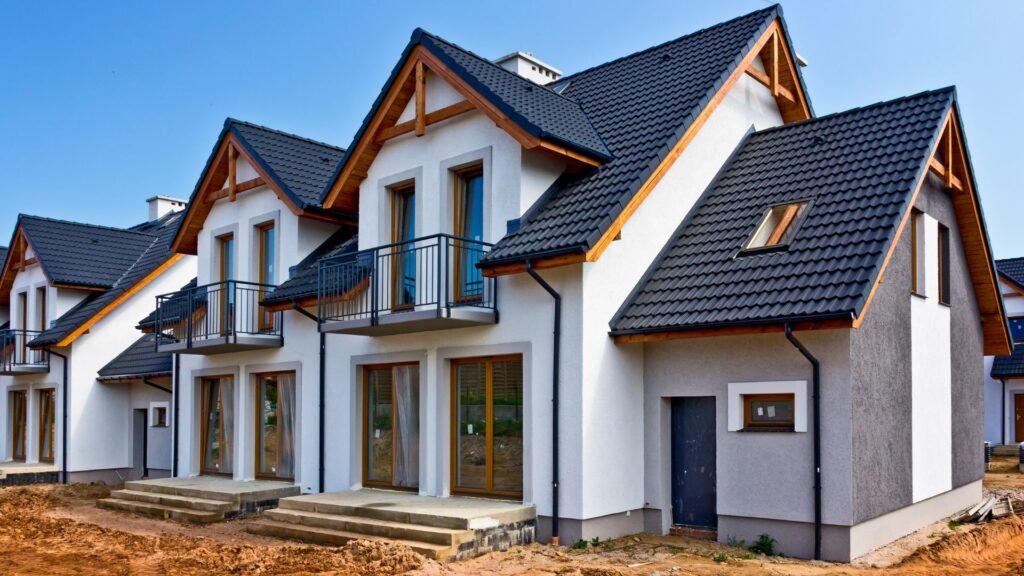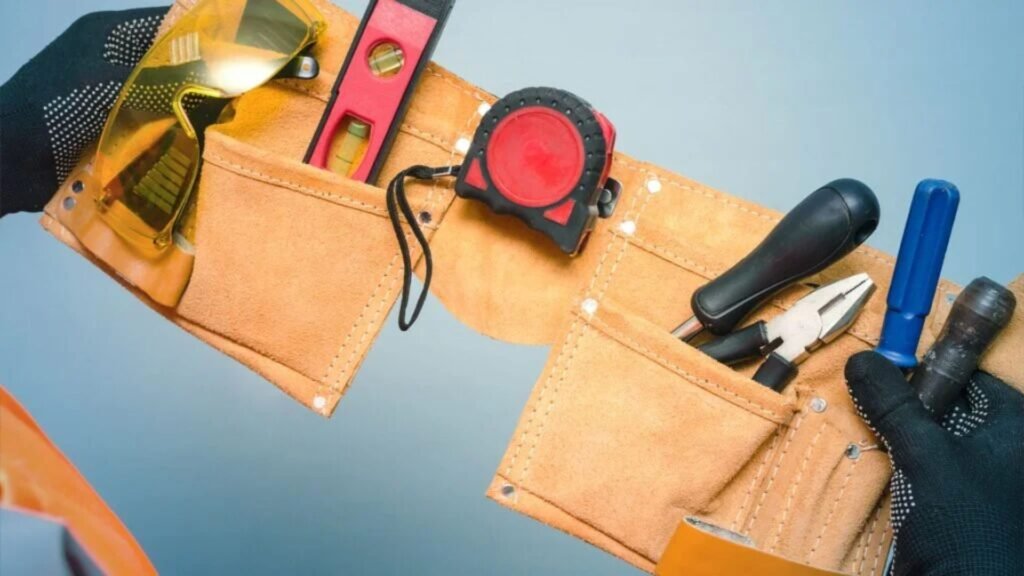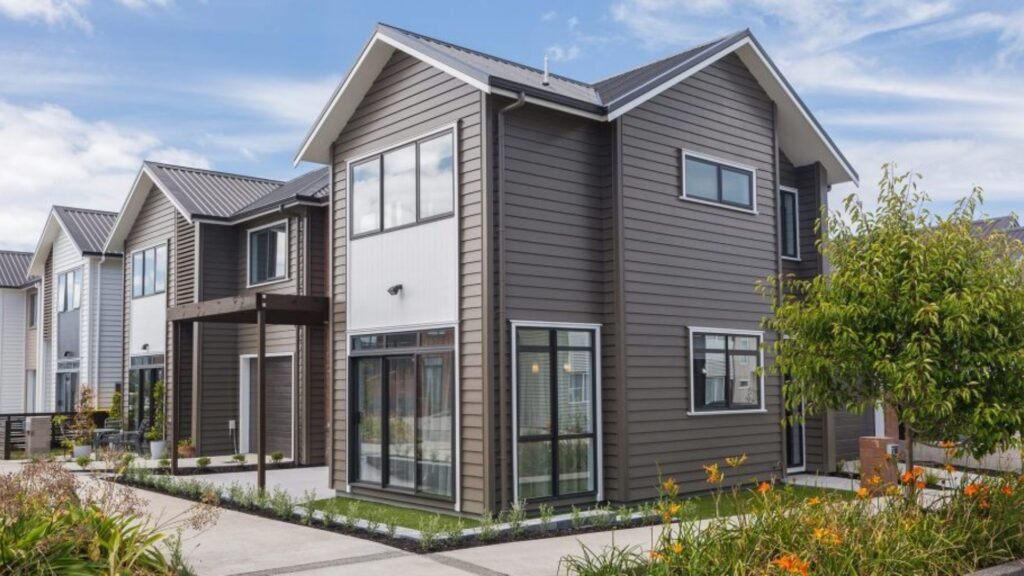Welcome to your go-to guide for fresh bathroom renovation ideas tailored for New Zealand homes. Whether you’re upgrading a tired old bathroom or starting from scratch, this post will give you inspiration that’s practical, stylish, and suited to the unique layout and climate of NZ properties. From smart storage solutions to design tips that make small spaces feel bigger, we’ll walk through everything you need to know to create a bathroom that works for your lifestyle and adds value to your home. Whether you’re in a city apartment, a coastal bach, or a classic Kiwi villa, you’ll find ideas here that fit your space, budget, and taste.
Popular bathroom renovation trends in New Zealand include wall-hung vanities, matte black tapware, and light coastal colours. Modern designs focus on smart storage, stylish fixtures, and space-saving layouts. Whether updating a small bathroom or a full ensuite, there are budget-friendly options for every Kiwi home.
Table of Contents
Why Renovate Your Bathroom?
Renovating your bathroom isn’t just about making things look better, it’s about creating a space that works better for your everyday life. Whether you’re living in a small apartment in Auckland or a spacious home in Christchurch, a bathroom upgrade can make a noticeable difference in both function and value. Below, we explore the key reasons why renovating your bathroom is a smart decision for New Zealand homeowners.
Boost Home Value
One of the biggest reasons people choose to renovate their bathroom is to increase their property’s value. A clean, modern, and functional bathroom is a major selling point in the NZ real estate market. Buyers often pay closer attention to kitchens and bathrooms, and an outdated or poorly maintained space can be a dealbreaker. By updating tiles, fixtures, lighting, and layout, you make your home more appealing, and potentially more profitable, when it’s time to sell.
Even if you’re not planning to sell anytime soon, a renovated bathroom still adds value by improving your home’s overall look and livability. Think of it as an investment that pays off both now and in the future.
Improve Comfort And Storage
A well-designed bathroom makes your daily routine easier and more comfortable. Many older New Zealand homes have bathrooms that lack proper storage, making them feel cluttered and inefficient. Renovating gives you the chance to rethink how the space is used.
Installing floating vanities, mirrored cabinets, and recessed shelves can create more usable storage without taking up floor space. You can also improve the comfort of the space by adding underfloor heating, better ventilation, or upgraded lighting, especially useful in colder regions like Dunedin or Wellington.
Fix Outdated Fixtures Or Moisture Issues
Outdated bathrooms often come with hidden problems. Old plumbing, worn-out tiles, or cracked grout can lead to leaks, mould, and water damage. These issues are common in parts of NZ with high humidity, like coastal areas and older bungalows that lack proper ventilation.
Renovating gives you the opportunity to replace faulty fittings, upgrade to water-efficient fixtures, and install proper waterproofing. These updates protect your home’s structure and reduce future maintenance costs. Plus, modern taps, toilets, and showers often use less water and energy, saving you money long-term.
Tailor It To Your Lifestyle
Every household is different, and your bathroom should reflect how you live. Whether you’re designing a child-friendly space, adding accessibility features for aging family members, or turning an ensuite into a personal retreat, renovation helps you customize the space for your needs.
For example, young families might prioritize durable materials and storage, while couples may want a double vanity or walk-in shower. Renovation puts you in control, so you don’t just have a bathroom that looks good, but one that fits your lifestyle.
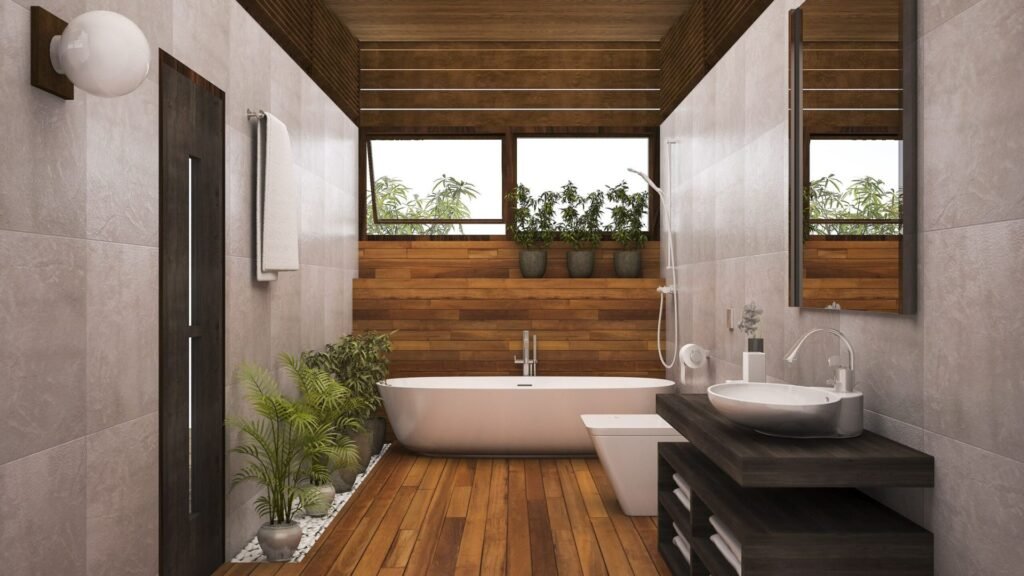
Key Things To Consider Before You Start
Planning a bathroom renovation in New Zealand takes more than just picking tiles and tapware. Before any demolition begins, it’s important to think through the key decisions that can impact your budget, timeline, and final result. Here’s what you need to consider to make sure your project runs smoothly from day one.
Set A Realistic Budget
Start by figuring out how much you can comfortably spend. A bathroom renovation in NZ can range anywhere from a few thousand dollars to over $25,000 depending on the materials, labour, and scope of work.
Make a rough list of what you want done, new tiles, updated vanity, plumbing changes, and then start pricing it out. Don’t forget to leave some buffer for unexpected costs. Water damage, old pipes, or extra structural work can pop up during the process, especially in older Kiwi homes.
Getting quotes from at least two or three local tradies will give you a solid idea of realistic costs in your area. Include everything, fixtures, labour, tiles, lighting, waterproofing, and any council consent fees.
Understand Local Council Consent Requirements
Not all renovations need building consent, but in New Zealand, anything that involves plumbing changes, structural alterations, or changes to wet areas might require it.
If you’re moving a toilet, installing a tiled shower, or altering the layout of the space, check with your local council before starting. Skipping this step could lead to costly delays or even fines.
Use the NZ Building Code as your guide or talk to a licensed building practitioner (LBP). They’ll know exactly what’s required based on your specific plans. Don’t assume everything is covered under “minor work”, consent rules are strict, especially when it comes to waterproofing and drainage.
Choose A Licensed Plumber Or Builder
Quality matters. Always hire a licensed plumber or builder who’s familiar with New Zealand building standards. It’s tempting to go with the cheapest quote, but experience and reputation are worth the extra cost. A skilled tradie can prevent costly issues like poor waterproofing, slow drainage, or leaks that show up months later.
Ask for references, check online reviews, and make sure they’re insured. You should also request a written quote that covers timelines, materials, and what happens if something goes wrong. Clear communication upfront avoids tension later.
For big jobs, consider a project manager or a renovation company that coordinates all trades. This can be helpful if you’re juggling plumbing, tiling, and electrical work.
Be Clear On Your Must-Haves Vs Nice-To-Haves
Before you dive into design decisions, separate your must-haves from your nice-to-haves. This helps you stay focused and avoid budget blowouts.
Must-haves are the non-negotiables, things like fixing water leaks, improving ventilation, or upgrading old plumbing. Nice-to-haves might be luxury tiles, underfloor heating, or a floating vanity. If money gets tight, you’ll know exactly where to cut back without sacrificing the core functionality.
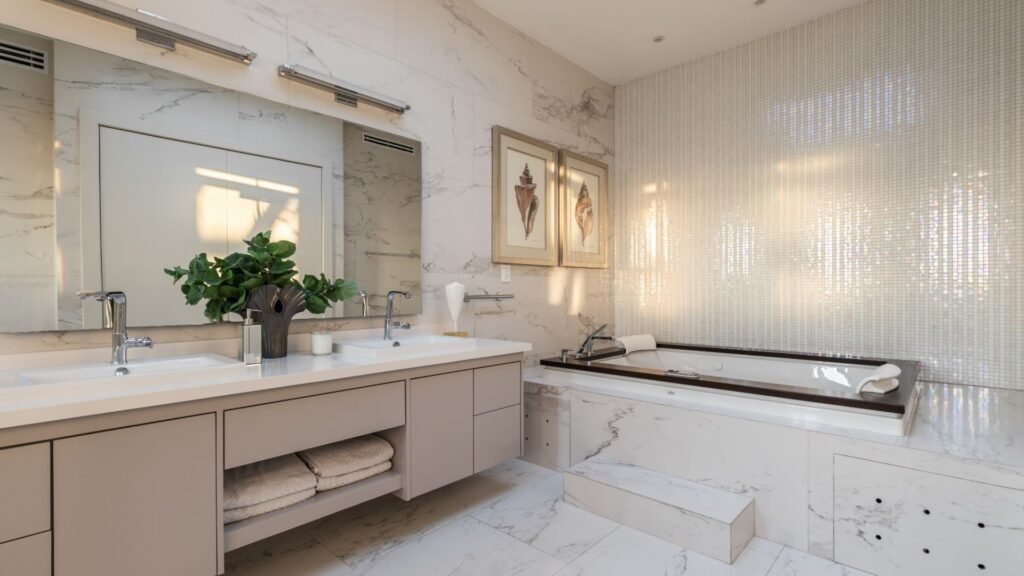
Layout And Space-Saving Ideas
Designing a bathroom that feels open, practical, and visually appealing is a top priority for many New Zealand homeowners, especially when working with limited space. Whether you’re updating a tiny ensuite or a compact family bathroom, smart layout choices and clever space-saving ideas can completely change the way your bathroom looks and functions.
Make Small Bathrooms Feel Bigger
One of the easiest ways to make a small bathroom feel more open is by using mirrors. Large wall mirrors reflect light, make the room appear wider, and help reduce any sense of tightness. If possible, place a mirror opposite a window to amplify natural light. You can also use mirrored cabinets for a dual function, storage and spaciousness in one. Wall-hung vanities are another space-smart option. By raising the vanity off the floor, you create the illusion of more floor space and make the room feel less cluttered. Many models still offer generous drawer space, making them practical without being bulky.
Reconfigure Layout For Better Flow
If your bathroom feels cramped or inefficient, rethinking the layout can make a big difference. In older New Zealand homes, bathrooms often have dated layouts that no longer suit modern needs. Moving fixtures like the toilet or vanity might seem like a big job, but it can improve usability and make the room more inviting. Keep high-traffic zones clear and avoid placing fixtures too close together. For example, shifting the toilet away from the entry or placing the shower in a back corner can give the room better balance and allow for smoother movement.
Remove Bathtubs Or Use Corner Showers In Tight Spaces
In smaller homes or urban apartments, you might not have room for both a shower and a bath. If you rarely use the tub, consider removing it to free up valuable floor space. This allows for a larger walk-in shower, which adds a touch of luxury and improves day-to-day convenience.
If you want to keep both, a corner shower is a smart solution. These are designed to fit snugly into the corner of a room, leaving more open space in the centre. Choose a frameless glass design for a clean, modern look that helps the room feel more expansive.
Add Recessed Shelves Or Niches
Storage is a major concern in small bathrooms, but bulky cabinets often take up too much space. Recessed shelves and shower niches offer a sleek alternative. Built directly into the wall, these spaces provide room for toiletries, towels, or decorative accents without interrupting the flow of the room.
In the shower, a built-in niche is perfect for holding soaps and shampoos, keeping everything tidy without using a wire rack or corner caddy. You can also add recessed shelving above the toilet or in unused wall areas to maximise storage without sacrificing design.
With the right layout and space-saving upgrades, any bathroom, no matter how small, can feel modern, open, and functional. Focus on creating flow, removing clutter, and making every inch count. These practical changes don’t just improve your bathroom’s look; they also make it easier and more enjoyable to use every day.
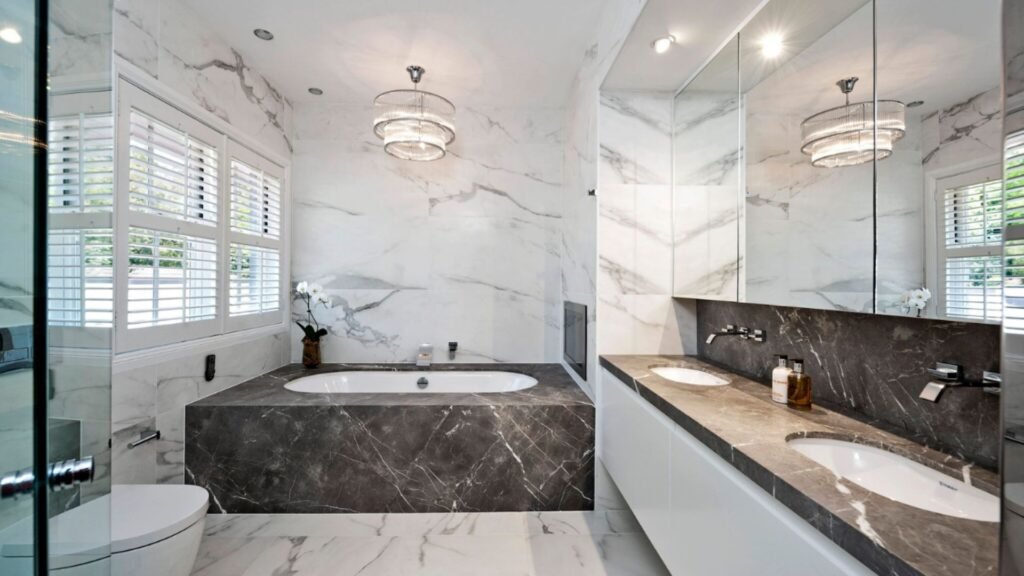
Lighting And Ventilation Upgrades
When planning a bathroom renovation in New Zealand, lighting and ventilation are often overlooked, but they make a big difference. A well-lit, properly ventilated bathroom isn’t just more enjoyable to use, it’s also more energy-efficient and resistant to moisture damage.
Maximise Natural Light With Skylights Or Larger Windows
Natural light brings warmth, clarity, and a sense of openness to any bathroom. If your current setup feels dark or cramped, adding a skylight or enlarging a window can instantly transform the space. This is especially helpful in older NZ homes that tend to have small or poorly placed windows. A skylight is ideal for bathrooms without external walls, while larger windows work best in areas with privacy, like homes with fences or higher-level bathrooms.
Beyond aesthetics, natural light reduces your need for artificial lighting during the day, saving energy and lowering your power bill. If privacy is a concern, consider frosted or textured glass to let the light in while keeping visibility out.
Add Layered Lighting (Task + Ambient + Accent)
Layered lighting makes your bathroom more functional and comfortable. Relying on a single ceiling light often creates harsh shadows or uneven brightness. Instead, aim for a mix of:
- Task lighting around mirrors or vanities for grooming and makeup
- Ambient lighting for general brightness across the room
- Accent lighting to highlight features like shelving or artwork
Incorporating all three helps eliminate dark corners and gives you control over the room’s mood. Dimmers are a good addition if you want to switch from bright morning routines to a relaxed evening soak.
Choose LED For Energy Efficiency
LED lighting is the go-to choice for NZ homeowners. It lasts much longer than traditional bulbs, uses less energy, and produces less heat, which is ideal for enclosed spaces like bathrooms. LEDs are available in a wide range of colour temperatures, from warm white to cool daylight, so you can create the exact mood you’re after.
They’re also available in moisture-rated fittings, which are safe for bathrooms and meet NZ’s electrical safety standards. Swapping out old halogen or incandescent lights for LEDs is a simple upgrade that pays off quickly through lower power bills.
Install Proper Extraction To Reduce Mould (Important In NZ’s Damp Climate)
Ventilation is non-negotiable in New Zealand, where high humidity and poor airflow can quickly lead to mould and mildew, especially in older homes. A good extraction fan helps remove steam from showers and baths, prevents moisture buildup, and keeps the air fresher. Look for a fan that suits the size of your bathroom. Some models come with timers or humidity sensors to improve efficiency. If your bathroom has no external window, ventilation becomes even more critical. Always ensure the fan vents outside, not into your roof space, to avoid moisture getting trapped. Adding proper lighting and ventilation doesn’t just improve the look and feel of your bathroom, it helps protect your home. These upgrades add comfort, cut energy costs, and keep your space dry and safe for years to come.
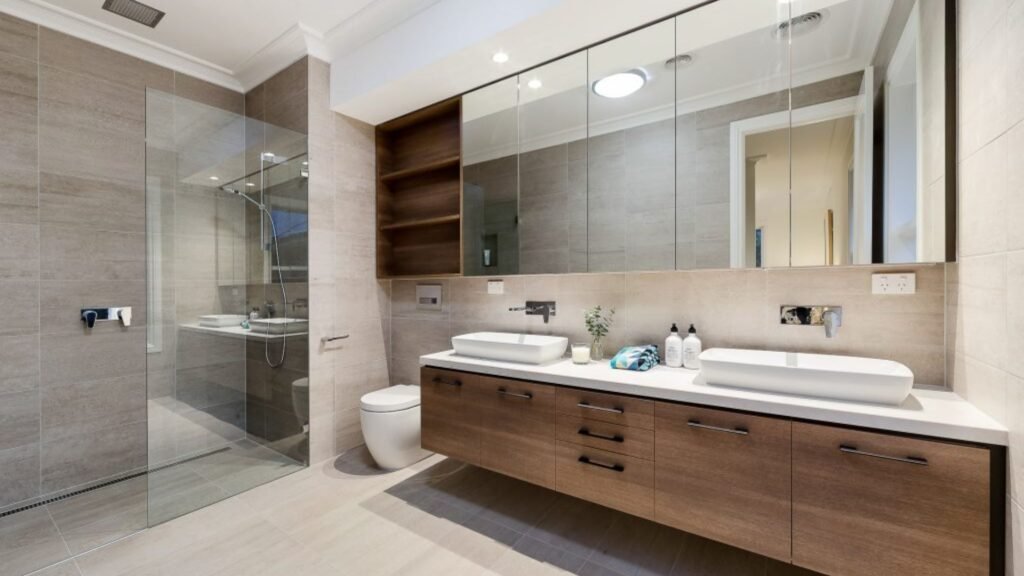
Tile, Paint, And Colour Trends In NZ Bathrooms
When it comes to updating your bathroom, tiles, paint, and colour choices can make a big difference. They set the tone for the entire space, literally. In New Zealand homes, bathroom trends are moving toward calming, natural finishes mixed with bold accents that reflect personal style. Whether you’re doing a full renovation or just want to refresh the look, your choice of tile, paint, and colour can bring it all together.
Use Light Neutrals To Open Up Space
If your bathroom feels small or lacks natural light, light neutral tones are your best friend. Soft whites, light greys, and warm beiges can instantly make a bathroom feel larger and more inviting. These colours bounce light around the room and create a clean, modern look without feeling sterile. They’re especially useful in compact bathrooms often found in older NZ homes or inner-city apartments.
You can pair neutral walls with slightly darker tiles or natural wood tones to add warmth and depth. If you’re hesitant about colour, neutrals provide a timeless base that you can build on with accessories or feature tiles.
Add Texture With Subway Tiles Or Patterned Floors
Flat and glossy is out, texture is in. Subway tiles remain a favourite in NZ bathrooms, but they’re now being laid in more creative patterns like herringbone or vertical stacks to create interest without overpowering the space.
For the floor, patterned tiles are making a comeback. Think Moroccan designs, geometric prints, or encaustic-style tiles. These bold patterns work well on smaller surfaces and are a great way to add personality without overwhelming the room. Textured or matte finishes are also trending, as they add grip and reduce slipperiness, practical and stylish.
Popular 2025 Trends In Nz: Matte Black Fixtures, Timber Tones, Forest Green, Soft Coastal Blues
As we head into 2025, NZ bathroom design is leaning into nature. Matte black fixtures are replacing shiny chrome for a more modern, grounded look. They work beautifully with white tiles, timber accents, and minimalist design.
Timber tones, whether real wood or wood-look tiles, bring warmth and a natural feel to any bathroom. These work especially well in coastal or rural homes, but also add texture to city spaces.
Forest green is another trending colour. It pairs well with natural stone, white walls, and brass hardware. If you’re after a calming, spa-like vibe, soft coastal blues are another strong choice. They reflect New Zealand’s coastal environment and create a clean, fresh atmosphere.
These colours are not just trendy, they also reflect a shift toward creating more personalised, relaxing spaces in the home.
Moisture-Resistant Paint Recommendations
Bathrooms deal with a lot of moisture, so the paint you choose needs to handle humidity and resist mould. Look for water-resistant or mould-resistant bathroom paints. In New Zealand, popular brands like Resene and Dulux offer lines specifically made for wet areas.
Choose semi-gloss or satin finishes for walls and ceilings. These are easier to clean and less likely to peel in humid conditions. For ceilings, opt for light colours that reflect light and prevent the space from feeling closed in. If you’re painting over tiles or previously painted surfaces, be sure to use proper primers to ensure the paint sticks and lasts.
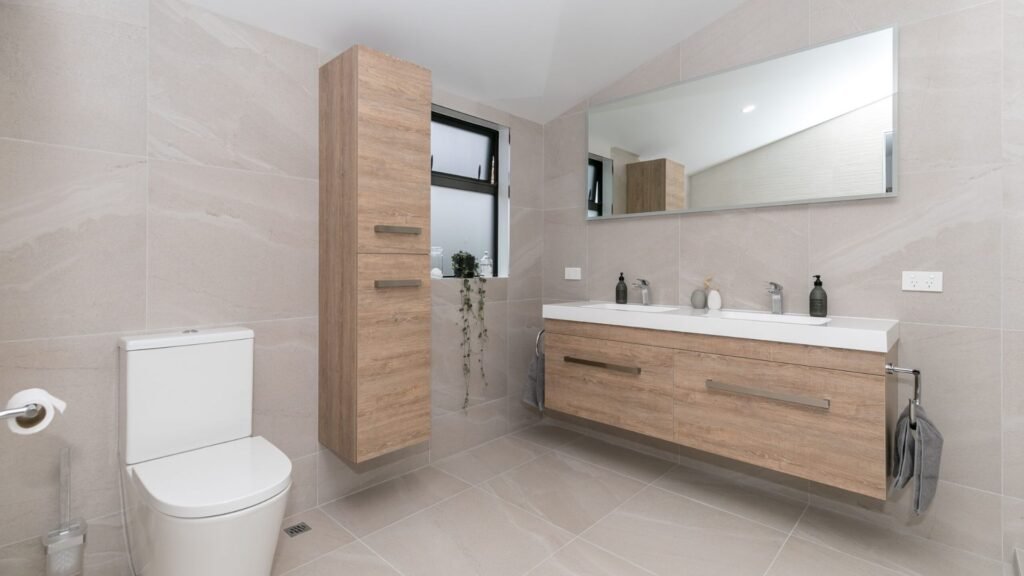
Fixtures And Fittings To Refresh The Space
Refreshing your bathroom doesn’t always mean starting from scratch. Sometimes, changing just a few fixtures and fittings can make a big impact, both in style and functionality. Whether you’re working with a tight budget or planning a full upgrade, these updates can instantly modernise your space and improve everyday use.
Upgrade Taps, Showerheads, And Handles
Outdated taps and showerheads can drag down the entire look of your bathroom. Swapping them out for sleek, modern designs is one of the easiest ways to refresh the space. Go for brushed nickel, matte black, or chrome finishes, these are popular in New Zealand and match well with most tile colours.
Look for water-saving options, too. Many modern taps and showerheads come with eco-friendly features that help reduce water usage without sacrificing pressure. It’s a smart move that’s both stylish and sustainable.
Install A Modern Toilet (Rimless Or Wall-Mounted Options)
Toilets have come a long way in design and performance. If your current one is bulky or inefficient, consider replacing it with a rimless toilet. Rimless models are easier to clean and offer better hygiene since they don’t have the hidden rim where grime can build up.
Wall-mounted toilets are also growing in popularity. They create a clean, streamlined look and can make small bathrooms feel more spacious. Plus, they make floor cleaning much easier, which is a bonus in busy households.
Opt For Deep Soaking Tubs If Space Allows
If you have the room, a deep soaking tub adds a touch of luxury and provides a place to truly relax. Unlike standard bathtubs, soaking tubs are designed for comfort. They’re deeper, allowing you to submerge fully and unwind after a long day.
Freestanding tubs are a strong design statement, especially in modern or minimalist bathrooms. In smaller bathrooms, you can still find compact soaking tub models that maximise space without compromising comfort.
Smart Toilets Or Sensor Taps For Modern Homes
For a more high-tech feel, consider adding smart features. Sensor taps turn on and off automatically, helping save water and reducing the spread of germs, a great option for families with kids. Smart toilets offer features like heated seats, built-in bidets, air drying, and even night lights. While they come at a higher price point, they bring a serious upgrade in comfort and functionality. Many NZ homeowners are starting to include these features in modern bathroom renovations for both hygiene and convenience.
Making small, thoughtful updates to your bathroom fixtures can refresh the entire space. Whether it’s replacing outdated taps or upgrading to a smart toilet, each change adds value, improves daily use, and helps your bathroom feel more aligned with your needs and style. You don’t need a full renovation to feel the difference, just the right updates in the right places.
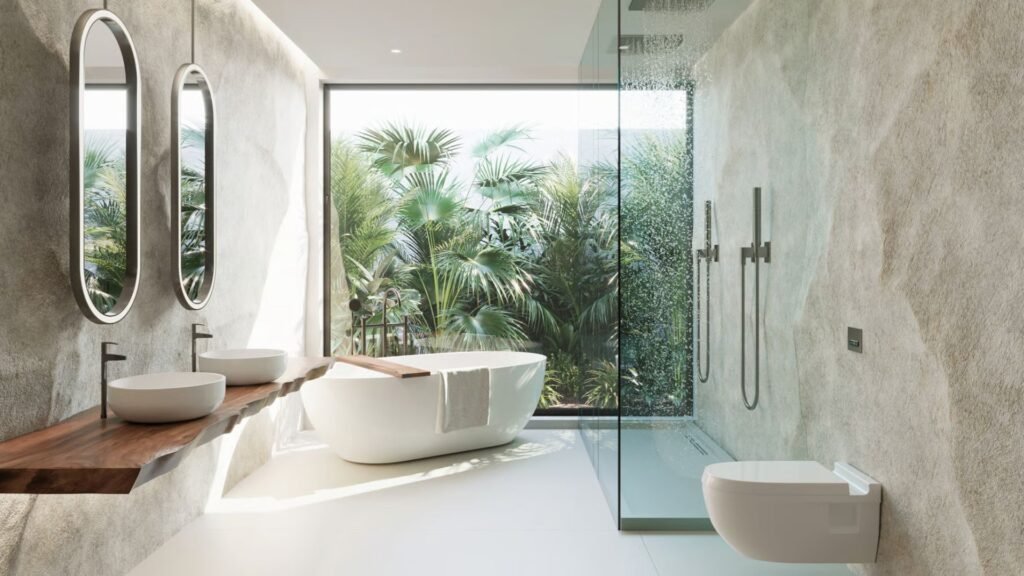
Storage Solutions That Actually Work
Creating a well-organised bathroom isn’t just about making it look tidy, it’s about making the space work better for your daily routine. Whether you’re dealing with a small ensuite or a family bathroom that gets a lot of traffic, smart storage can make a big difference. Here are a few storage ideas that actually work for real New Zealand homes, especially when you want your bathroom to stay clutter-free without sacrificing style.
Floating Vanities With Drawers
Floating vanities are a game changer for both design and practicality. Because they’re mounted to the wall, they create the illusion of more floor space, making the room feel larger. The built-in drawers offer deep, functional storage for toiletries, towels, and cleaning products. You can keep everything out of sight but still easy to access.
They also make cleaning easier, no more trying to reach under bulky cabinets. For NZ homes where bathrooms often have limited space, this design keeps things minimal and modern without giving up functionality.
Mirrored Cabinets
Mirrored cabinets, also called medicine cabinets, serve a double purpose. They provide essential mirror space while giving you hidden storage for everyday items. Think toothbrushes, skincare, and hair products, all kept neatly behind closed doors.
This is especially useful in smaller bathrooms where counter space is limited. The mirrored surface also reflects light, which helps brighten up the room, especially if you don’t have a window or natural light source.
Built-In Shelving Behind Doors Or Under Sinks
If you’re renovating and have the chance to add custom shelving, built-in storage is worth considering. Shelves built behind doors or under sinks can use otherwise wasted space. These shelves are great for storing cleaning supplies, extra toilet paper, or rolled-up towels.
In tight spaces, even a shallow recessed shelf between wall studs can make a big difference. It keeps the floor area free and gives you space for things you need daily, without crowding your vanity or sink.
Hooks And Towel Ladders For Better Organisation
Hooks are simple but effective. Install them behind the door, on unused wall space, or beside the shower. They’re perfect for hanging towels, robes, or toiletry bags.
Towel ladders are another smart option. They don’t take up much space, and they can hold multiple towels at once. Plus, they look good, especially in timber or black finishes, which are popular in NZ bathrooms right now.
Unlike traditional towel rails, ladders can be moved around and even double as a decorative feature. It’s a practical way to combine storage and style.
When planning your bathroom renovation, think beyond cabinets and drawers. The best storage solutions are the ones that fit your daily habits and your space. In a New Zealand home where every square metre counts, using these smart options can help you keep your bathroom functional, tidy, and visually appealing.
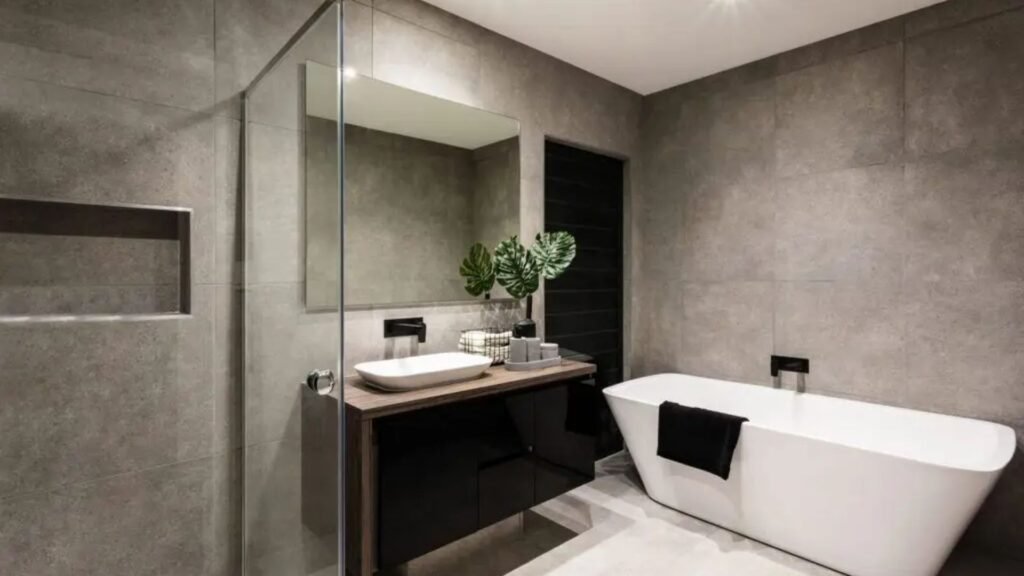
Budget-Friendly Bathroom Renovation Ideas
Renovating a bathroom doesn’t always have to drain your bank account. If you’re in New Zealand and looking to give your space a fresh look without spending a fortune, there are plenty of smart and cost-effective ways to do it. Below are practical ideas that can improve the appearance, functionality, and feel of your bathroom, without needing a full overhaul.
Repaint Tiles Or Cabinetry
Old tiles and outdated cabinetry can make your bathroom feel tired and worn. Instead of ripping everything out, consider painting over them. Tile paint is specially made to handle moisture and wear, and it can transform old colours into fresh, modern tones. Similarly, painting your bathroom cabinets in white, soft grey, or even navy can give them a clean, updated look for a fraction of the cost of replacing them.
Replace Hardware Instead Of Full Cabinetry
If your vanity or storage unit is still functional, keep it. What you can do is change the cabinet handles, knobs, and hinges. Swapping out old brass or plastic hardware for matte black, brushed nickel, or stainless steel options can instantly modernise the room. This small change makes a big visual difference without the cost or hassle of full cabinet replacement.
Update Lighting And Mirror Only
Good lighting can change everything in a bathroom. Replacing harsh ceiling lights with soft LED fixtures or adding wall sconces near the mirror improves both style and function. Mirrors also make a major impact, upgrade your plain mirror to a round, backlit, or framed version. You’ll add depth, brightness, and elegance without needing to touch anything else.
Use Peel-And-Stick Wall Panels
Peel-and-stick wall panels or vinyl tiles are ideal for renters or budget-focused renovators. These easy-to-install materials come in a wide range of patterns and finishes, from faux tiles to wood textures. They’re moisture-resistant, affordable, and can go directly over existing walls or tiles. Perfect for creating a feature wall or covering up old surfaces.
Regrout Instead Of Retiling
Grout tends to discolour and crack over time, making your entire bathroom look unclean. Instead of ripping out your tiles, consider regrouting them. Fresh grout lines in white, grey, or black can make your tiles look brand new again. It’s an affordable upgrade that delivers high visual impact with very little disruption.
These budget-friendly bathroom renovation ideas are perfect for NZ homeowners who want a stylish space without breaking the bank. Each tip focuses on making the most of what you already have, reducing waste, and creating noticeable change through small updates. Whether you’re prepping for resale or just need a refresh, these simple upgrades go a long way.
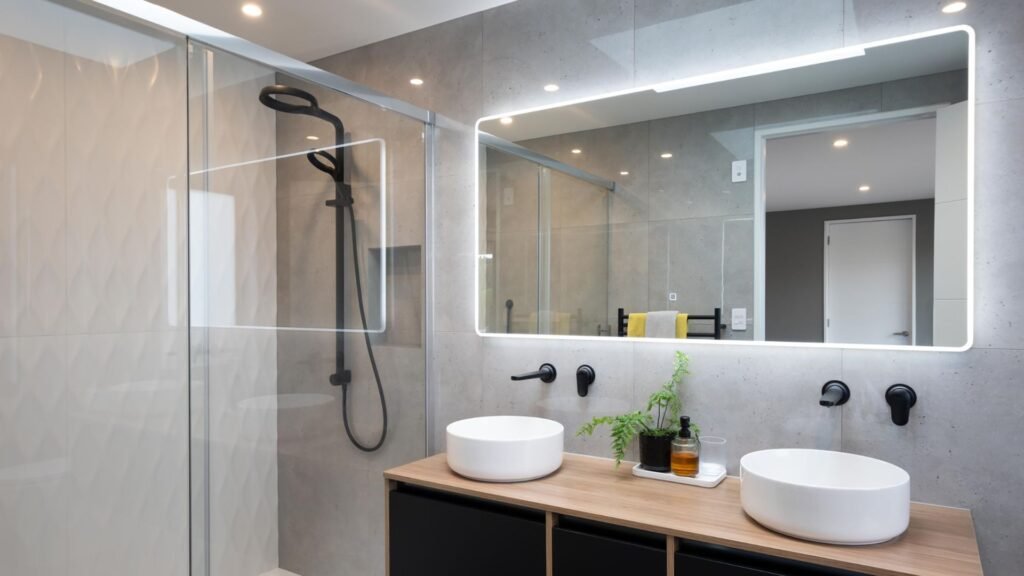
Eco-Friendly And Energy-Saving Upgrades
Renovating your bathroom isn’t just about looks or convenience, it’s also a chance to make smarter choices for your home and the environment. In New Zealand, where sustainability is becoming a top priority for homeowners, adding eco-friendly and energy-saving features during a bathroom renovation can make a real difference. Not only can these changes help lower your power and water bills, but they also reduce your impact on the planet. Below are practical, proven upgrades that strike a balance between function, savings, and environmental responsibility.
Low-Flow Toilets And Water-Saving Showerheads
Older toilets and traditional showerheads can waste thousands of litres of water every year. Swapping them for low-flow options is one of the easiest and most effective upgrades you can make. A modern low-flow toilet uses as little as 4–6 litres per flush, compared to 11 litres in older models. Water-saving showerheads still provide strong pressure but use much less water, saving both water and heating costs over time.
For New Zealand homes, where water restrictions can sometimes apply, these fixtures aren’t just helpful, they’re practical. Look for products with the Water Efficiency Labelling Scheme (WELS) rating to choose the best models.
Led Lighting
Good lighting transforms your bathroom, and using LED options makes it energy-efficient too. LED lights use up to 80% less electricity than traditional bulbs and last much longer. That means fewer replacements, lower energy bills, and less waste.
In a bathroom setting, LEDs work well for both task lighting (like around mirrors) and ambient lighting. You can also find dimmable and colour-changing LEDs that create a relaxing spa-like feel without driving up your power bill.
Underfloor Heating With Smart Controls
If you’re looking to add comfort while keeping energy use in check, underfloor heating is a solid choice. It warms the entire bathroom evenly, eliminating the need for noisy fan heaters or bulky wall panels. When paired with smart thermostats, you can program the system to heat only when needed, like during chilly NZ winter mornings.
This upgrade is especially useful in tiled bathrooms, where floors can feel cold year-round. Smart controls let you monitor usage and reduce waste, giving you more control over your home’s energy consumption.
Recycled Or Locally Sourced Materials
The materials you choose matter, not just for aesthetics, but for sustainability too. Opting for recycled tiles, reclaimed timber, or locally made cabinetry helps reduce your renovation’s carbon footprint. It also supports local NZ businesses and minimises transport-related emissions.
You can also look for bathroom products made with low-VOC (volatile organic compounds) materials to improve indoor air quality. Whether you’re going for a rustic, coastal, or modern look, eco-friendly materials come in a wide range of finishes and styles that don’t compromise on design.
Making your bathroom greener doesn’t mean sacrificing style or comfort. These upgrades help create a space that’s smarter, cleaner, and better for both your wallet and the world. Whether you’re doing a full renovation or just a few targeted changes, these ideas are worth considering for any NZ bathroom project.

Common Mistakes To Avoid
Renovating a bathroom is a big investment, one that can improve your daily life and add real value to your home. But it’s also easy to make mistakes that cost time, money, and comfort in the long run. Here are some common missteps New Zealand homeowners should avoid when planning a bathroom renovation.
Choosing Style Over Function
It’s tempting to focus only on looks, but a beautiful bathroom that doesn’t work well is a daily frustration. Prioritising design over practicality often leads to issues like poor layout, not enough storage, or awkward traffic flow. For example, installing a freestanding tub in a tight space may look great in photos, but if it cramps movement or blocks natural light, it’s not worth it.
Instead, think about how you use the space every day. Make sure there’s enough room to move, store essentials, and clean easily. Choose fixtures and finishes that suit both your taste and your lifestyle.
Ignoring Ventilation
Many NZ bathrooms suffer from excess moisture due to the climate. Poor ventilation leads to mould, peeling paint, and damaged materials. Yet, this essential detail is often overlooked during renovation planning.
Every bathroom should have an extractor fan that vents to the outside, not just into the ceiling cavity. If possible, include windows that open or even install a skylight with a vent feature. Proper airflow helps protect your investment and keeps your bathroom healthy long term.
Not Future-Proofing
A great bathroom renovation isn’t just about what looks good now, it’s about what will still work five or ten years from today. One mistake people make is ignoring accessibility or resale value. For example, choosing trendy finishes that age quickly or installing fixtures that make it hard for elderly family members to use the space.
Future-proofing means thinking about wide doorways, walk-in showers, or non-slip flooring. Even if you’re not planning to sell, these features can help your home stay functional as your needs change.
Going DIY Without Proper Skill Or Permits
DIY projects can be rewarding, but a bathroom is not the place to guess your way through waterproofing or plumbing. Mistakes in these areas often lead to expensive repairs, water damage, or even legal issues if you skip the required permits.
In New Zealand, certain work like plumbing, drainage, and electrical changes must be done by licensed professionals. Cutting corners might save you upfront, but it can cost far more down the line. Always get the right consents and work with trusted tradies when it counts.
Avoiding these common mistakes will help you create a bathroom that not only looks great but also stands the test of time. Whether you’re doing a full renovation or just refreshing key areas, smart planning will always pay off.
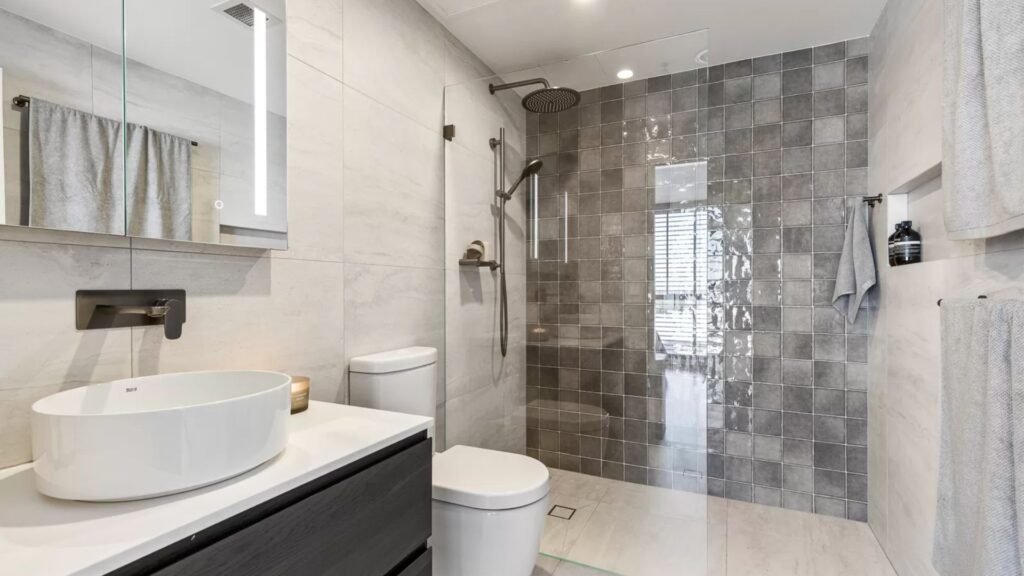
Working With NZ Renovation Professionals
Hiring the right renovation professional can make or break your bathroom project. Whether you’re planning a small update or a full-scale transformation, working with licensed and reliable tradies in New Zealand ensures that your renovation is done properly, safely, and up to code. Below, we break down what you should look for, how to get accurate quotes, and why having a clear contract matters.
What To Look For In A Tradie
Not all tradies are created equal. In New Zealand, it’s essential to work with professionals who are licensed and insured. This protects you if something goes wrong and ensures the work meets legal standards. You can check a plumber or builder’s credentials through the Licensed Building Practitioners (LBP) register or the Plumbers, Gasfitters and Drainlayers Board.
Good reviews also matter. Search online, ask friends or neighbours, and check social media groups or local forums. Look for consistent feedback about quality, timeliness, and communication. A tradie who’s reliable, respectful, and responsive is just as important as one who does great work.
Also, don’t overlook their experience with bathroom projects. Someone who specialises in bathrooms will likely have better insight into layout, waterproofing, and space-saving solutions specific to NZ homes.
How To Get Quotes And Compare Them
Start by reaching out to at least three different tradies or renovation companies. Provide the same information to each, your renovation goals, timeline, budget, and preferred materials. This makes it easier to compare apples to apples:
When reviewing quotes, don’t just go with the cheapest one. Look at what’s included:
- Are materials part of the cost?
- Is demolition, removal, and cleanup covered?
- Are there potential extra charges?
A good quote should be itemised, detailed, and easy to understand. If anything is vague or missing, ask for clarification. A professional will gladly walk you through the costs and help you understand what’s realistic for your budget.
Importance Of Contracts And Clear Timelines
Once you’ve chosen a tradie, don’t start until you have a signed contract. A proper renovation contract should include:
- A detailed scope of work
- Start and finish dates
- Payment schedule
- Warranties or guarantees
- Process for dealing with delays or changes
Clear timelines keep everyone accountable. Unexpected issues can pop up, especially in older NZ homes, but a solid timeline helps manage expectations and keep the project on track.
Without a contract, you’re taking a risk. Verbal agreements may lead to misunderstandings or disputes down the line. Protect your investment and peace of mind by getting everything in writing.
Working with the right renovation professional in NZ means fewer headaches, better results, and a smoother experience from start to finish. Take the time to research, compare, and plan properly, it pays off in the long run.
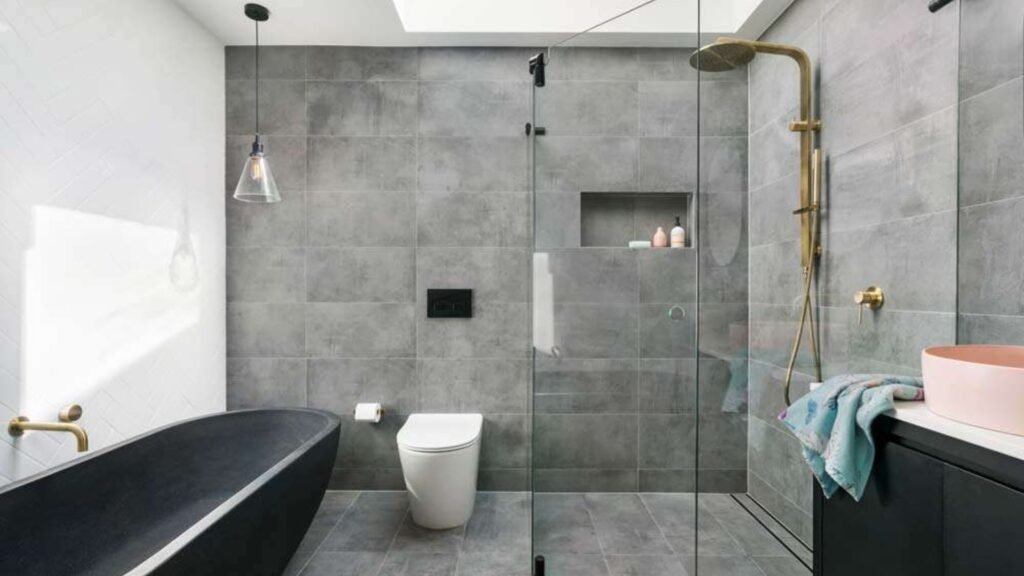
Real Renovation Inspiration From NZ Homes
Seeing real-world examples can help you picture what’s possible in your own home. Whether you’re working with a tight space, a unique layout, or a modest budget, these real bathroom renovation stories from around New Zealand can give you practical ideas and fresh motivation to get started.
Urban Apartment: Making The Most Of Small Spaces
In Auckland, a young couple transformed a dark, outdated bathroom in their city apartment into a bright and modern space. They removed the old bathtub and replaced it with a glass walk-in shower, instantly making the room feel larger. Wall-hung vanities and mirrored cabinets added smart storage without taking up floor space. Light grey tiles and white walls helped reflect natural light, creating a cleaner, more open look. This renovation took just under three weeks and stayed well under $15,000.
- Takeaway: In compact homes, layout and lighting make a big difference. Stick to clean lines, neutral colours, and multi-functional fittings to maximise space.
Family Home: Balancing Style And Function
A Wellington family of five renovated their main bathroom to keep up with their growing needs. They opted for a double vanity to prevent morning traffic jams, along with a large freestanding tub for evening wind-downs. The design combined warm timber tones with matte black fittings, giving it a stylish yet homely vibe. Underfloor heating and a powerful extractor fan were added for comfort and moisture control. Storage was a priority, so they added a built-in linen closet and custom vanity drawers.
- Takeaway: For busy households, every design choice should serve both style and function. Prioritise comfort, ventilation, and storage in family-friendly designs.
Coastal Bach: Simple Updates For A Fresh Look
On the Coromandel coast, a retired couple gave their dated beachside bach bathroom a fresh look without a full remodel. They kept the layout intact but updated the fixtures, replaced the old vinyl flooring with modern tiles, and swapped out yellowed lighting for LED downlights. A new vanity with a stone-look benchtop and brushed brass tapware gave the space a subtle touch of luxury. The total cost was under $10,000, and the entire project was completed in two weeks.
- Takeaway: You don’t need to rebuild from scratch. A few well-chosen upgrades, like lighting, surfaces, and tapware, can breathe new life into any bathroom.
Why These Examples Matter
These stories show that bathroom renovations in New Zealand don’t need to follow a one-size-fits-all formula. Whether you’re in a downtown apartment, a family suburb, or a quiet coastal town, your space can be improved with the right planning, even on a modest budget. Focus on your lifestyle, not just the trends, and use real renovations like these as a guide to what’s realistic, and achievable.
Your dream bathroom starts here. Check out our full range of renovation services and see why homeowners across NZ trust us to deliver results.
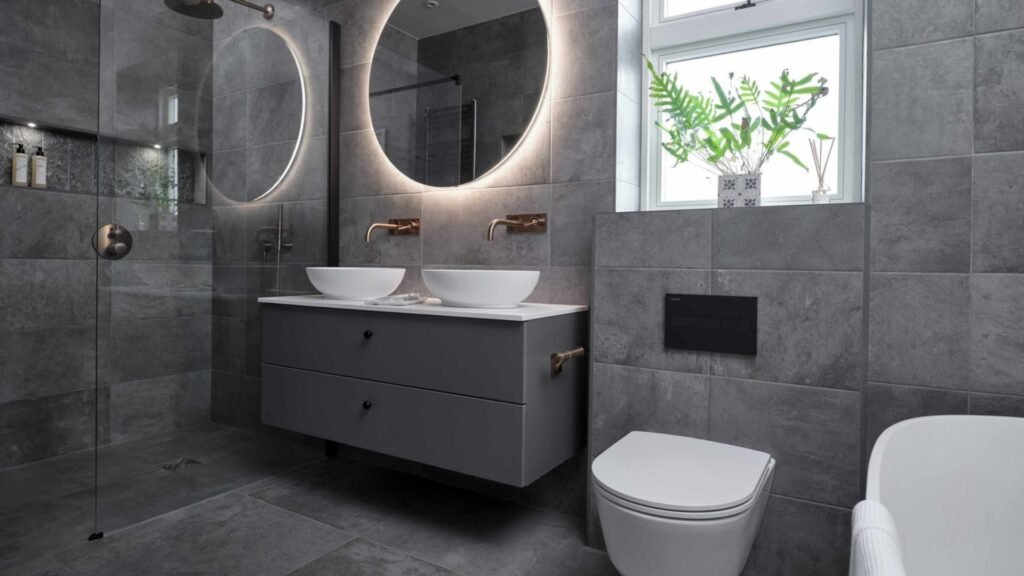
FAQs: About Bathroom Renovation Ideas For NZ
What are the most popular bathroom renovation trends in NZ?
Popular trends include wall-hung vanities, matte black or brushed nickel fixtures, large walk-in showers, and natural elements like timber finishes. Many NZ homeowners also opt for underfloor heating and LED mirrors for a modern, comfortable upgrade.
How much does a bathroom renovation cost in New Zealand?
Costs vary widely based on size, materials, and labour. A basic renovation may start at $8,000–$12,000, while high-end projects can exceed $25,000. Getting multiple quotes from local tradies helps you stay within budget.
Do I need council consent to renovate my bathroom in NZ?
You may not need consent for minor cosmetic changes, but structural work or plumbing relocation often requires a building consent. It’s best to check with your local council or talk to a licensed builder before starting.
What’s the best way to make a small bathroom feel bigger?
Use large mirrors, light colour schemes, wall-mounted fixtures, and frameless glass showers. Removing bulky storage units and using vertical space can also help open up the room.
Can I renovate my bathroom on a small budget?
Yes. Budget-friendly ideas include repainting walls or tiles, updating hardware, changing light fixtures, installing a new mirror, or regrouting. You don’t need to replace everything to see a big impact.
What’s the ideal layout for a functional bathroom?
The layout should support easy movement between the sink, toilet, and shower. For NZ homes with limited space, corner showers, floating vanities, and in-wall toilets help maximise usable area without compromising comfort.
How long does a typical bathroom renovation take in NZ?
On average, a full renovation can take 2 to 4 weeks, depending on the scale of work and availability of materials or tradespeople. Delays are common if consents are needed or unexpected repairs arise.
What eco-friendly options are available for NZ bathrooms?
Choose water-efficient toilets and taps, LED lighting, recycled tiles or sustainable materials, and smart ventilation. Eco-friendly choices reduce your footprint and may cut long-term utility costs.
How can I improve ventilation in my bathroom?
Install an extractor fan with humidity control, open windows daily, or consider a skylight with a vent. Good ventilation is essential in NZ’s damp climate to prevent mould and prolong the life of materials.
Should I hire professionals or do it myself?
DIY may work for painting or small cosmetic changes, but plumbing, waterproofing, and electrical work should be left to licensed trades. Hiring professionals helps avoid costly mistakes and ensures your bathroom meets NZ building codes.
Conclusion
Even small changes in your bathroom can make a big difference, whether it’s swapping outdated taps for modern ones or adding better lighting to brighten the space. Before you dive into a full renovation, take time to plan. Think about what you really need, how the layout works, and where your budget should go first. Avoid rushing into purchases just because something looks good online. Always aim for a balance between style, practical use, and making sure everything meets New Zealand’s building and plumbing standards. A thoughtful approach not only saves money but helps you create a bathroom that feels right for your home.

